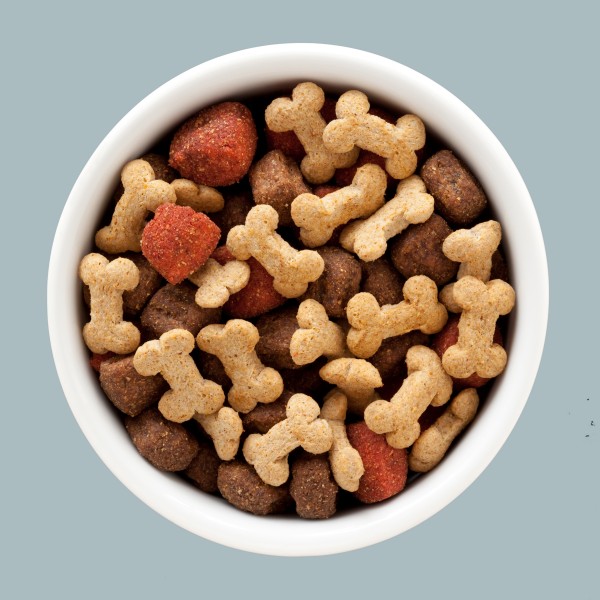The pet food market is growing fast—by several billion dollars each year. Food spending on our four-legged friends increased from $50 billion worldwide in 2014, to $54 billion just a year later. Not only are more households buying pets; owners are becoming more discriminating about products for their adopted "family members."
That’s why many large pet food processors are going beyond compliance with Food and Drug Administration (FDA) rules that govern pet food processing. Companies are paying attention to voluntary standards developed for human-grade food processing. Following guidelines such as Safe Quality Foods (SQF), Canada Gap, and British Retail Consortium (BRC), can help pet food processors minimize contamination, and differentiate their pet food as a “cut above.”
Filtering the air, steam, and liquids used in a pet food process is a key part of these standards—in fact, just as important as sourcing high-quality ingredients. While filtration cannot completely remove all possible contamination from the surrounding environment, it can help stop contaminants from moving downstream into food or onto food-contact surfaces.
Filtration is important in 3 areas of a process. These critical control points are:
- Points of origin: Where your facility brings in or generates air, steam, or liquid, such as your utility or bulk storage room;
- Food contact points: Farther downstream, wherever the air, steam, or liquid touches food or food-contact surfaces; and
- Final opportunity points: "Last chance" locations to catch impurities that could irreversibly damage your product if they survive into packaging.
Redundancy is important to help reduce the possible risk of different types of contamination and different points of the process. The adage, "Don’t put all your eggs in one basket," is highly pertinent to filtering. Also, staged filtration is more cost-effective since pre-filters on points of origin remove larger contaminants that would otherwise cause wear on costlier point of use filters downstream.
With those general "ground rules," here are additional principles to keep in mind for air, steam, and liquid. (See the our Pet Food Filtration Map below for specific filter recommendations.)
Air Filtration
Compressed air is used to run processing equipment, to dry equipment after wash-downs, and to move product pneumatically through piping. Air compressors frequently leak oil and moisture (an ideal diet for microbes) and shed metal flakes as they age.
SQF states that "compressed air and other gases used in manufacturing process shall be clean and present no risk to food safety." BRC specifies that air "used in direct contact with an ingredient…shall be monitored to ensure it does not represent a contamination risk. Compressed air used in contact with product shall be filtered."
Donaldson recommends an "SQF train"—a series of filters just beyond the compressor. This series consists of a pre-filter (5 microns) for larger particles; a coalescing filter to remove bulk moisture, and a final filter of 0.2 microns for smaller contaminants. Finally, a desiccant air dryer further downstream is designed to remove water vapors that could provide a good breeding environment.
Liquid Filtration
In a pet food process, water is present everywhere, from cleaning areas to ingredient and mixing tanks. It also feeds boilers to cook product, is used for industrial blending and gravy injection, and provides mist for vitamin coating.
Even if you use municipal water, a presumably clean source, the water line into your process should be pre-filtered as a further precaution. Downstream in the process, final filters should be installed on water lines dedicated to your washing, cooking, blending, or injection stations. Sterile input water will reduce the likelihood of contamination and ensure better product consistency.
In plants where water is heat-sterilized or sent through reverse osmosis (RO) for purification, pre-filtration of feed water will help prevent organic biofilm from building up on expensive equipment.
Steam Filtration
Steam is great for cooking because you can control the temperature very accurately by controlling the steam pressure. Steam can be directly injected into raw product to thaw or cook it, or used to heat a jacket around the raw food. Some pet foods are extruded under high-pressure steam to form pellets or kibbles. Steam is also used in the canning process to cook the food once it has been sealed in the can.
Over time, steam boilers can become a breeding ground for contaminants because of strong chemical cleaning solvents, which can degrade equipment. Steam filtration can help protect your product and equipment from the byproducts. The same is true for the spray balls on steam injectors. Their small orifices can plug with particles carried in on an unfiltered steam line.
Wherever steam contacts food, it’s important to aim for culinary-grade steam. The guideline for this comes from the dairy industry and its 3-A Standards, which defines culinary grade steam as having 95% of particulates 2 microns in size or larger removed.
Conclusion
The FDA maintains a website that tracks contamination incidents in pet food. Recent posts reported listeria and salmonella outbreaks, and named the pet food companies implicated. With brand reputations at risk, more processors are adopting human-grade food standards.
For assistance with a filtration plan, call on the experts at Donaldson Process Filtration. We have helped some of the largest names in pet food live up to a higher standard.





